Best gravel bike tyres 2025: suitable for all types of conditions and terrains, thoroughly tested and rated
Discover our selection of top-rated gravel bike tyres that cater to every terrain, condition, frame clearance, and budget
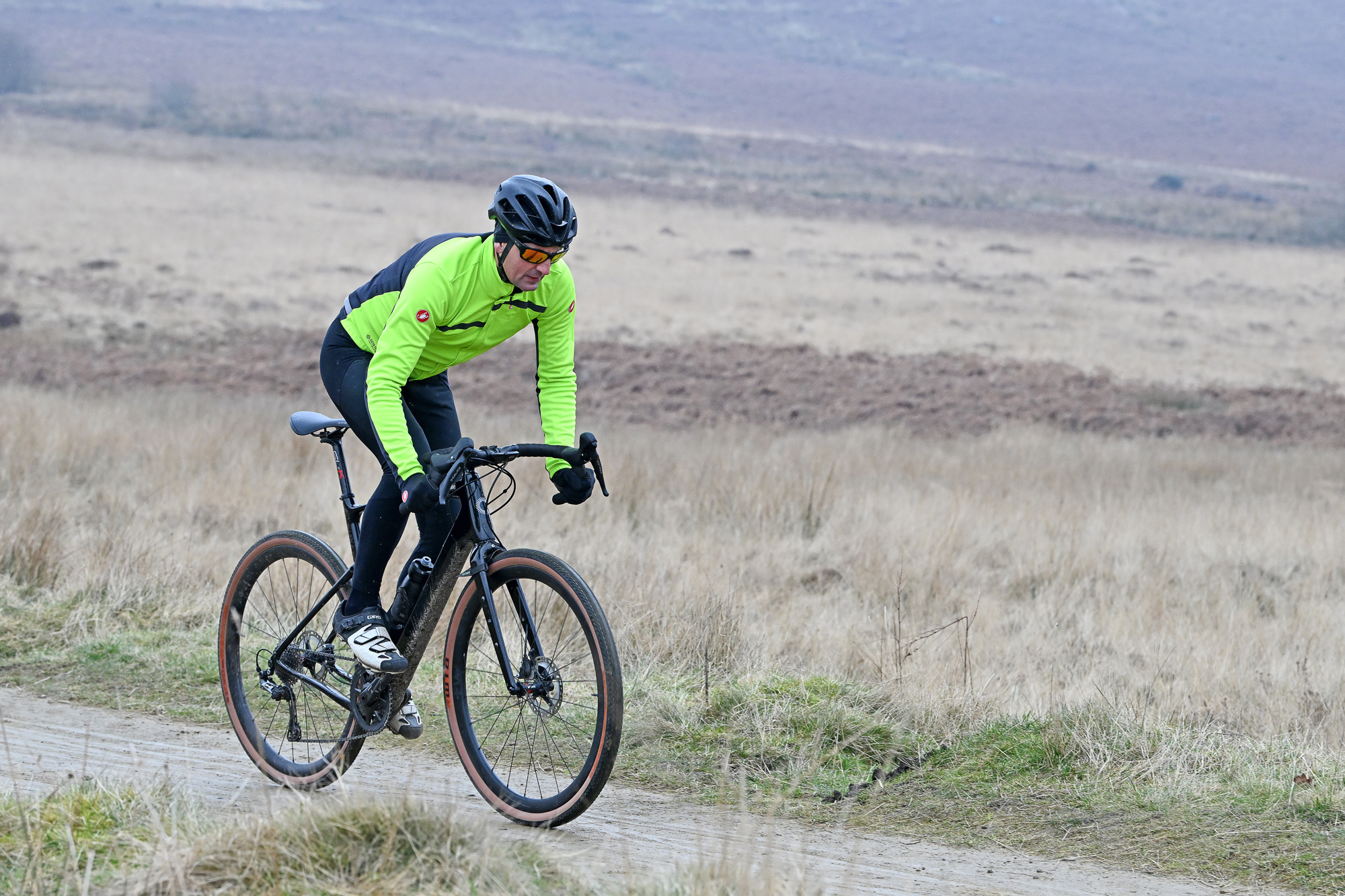
The best gravel bike tyre of choice is a topic of conversation whenever you gather together a bunch of off-road drop-bar riders.
What is the best tire size and tread pattern, 700c or 650b, tubeless setups, or the tan sidewall debate - there's a lot to take into account when selecting a new set of the best gravel tyres.
The fact that tyres do wear out means that you get more opportunities to experiment and try different options. Switching between different tubeless setups might be a bit of a faff, but what works for you might not necessarily be the preference of the next gravel rider.
Regardless of personal taste, there are a few things that everyone wants on their list: puncture protection, grip, low rolling resistance, low weight, and good value. That is why we have awarded the Schwalbe G-One Overland, as you guessed it, the best all-round gravel bike tyre. Its fit-and-forget nature is ideal for most, and given that it's only overwhelmed by deep mud, it covers nearly all the bases.
Of course, like anything, it might not be possible to get all of these at once, so a compromise is required, based on your priorities, riding style and conditions.
If you're reading this in anticipation of getting your first off-road steed, you'll want to check out our guide to buying your first gravel bike. Equally, if you're a seasoned campaigner but are looking to update your riding quiver, then our guide to the best gravel bikes has you covered.
The Quick List
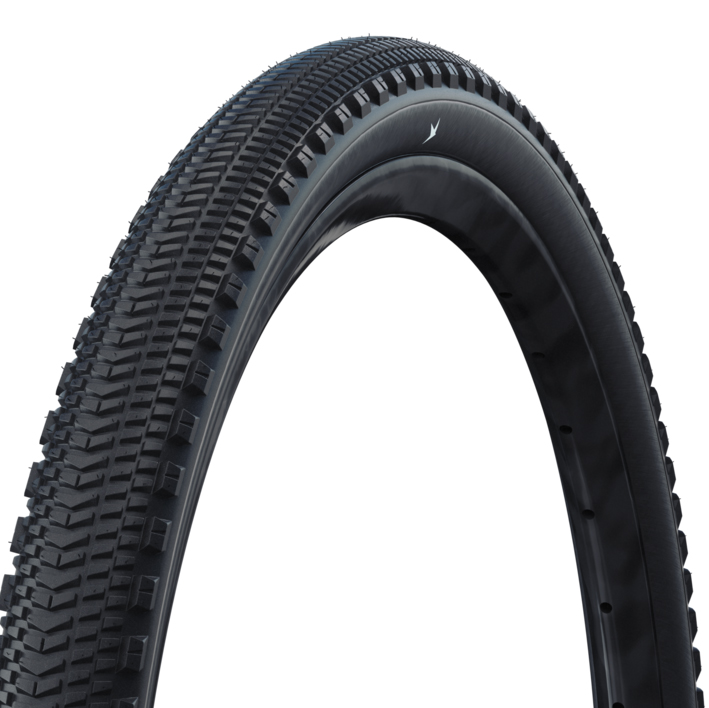
The G-One Overland is great as a fit-and-forget tyre. Despite its lugs, it rolls pretty quickly, and they provide impressive grip in looser conditions, only getting a little overwhelmed when things get very muddy.
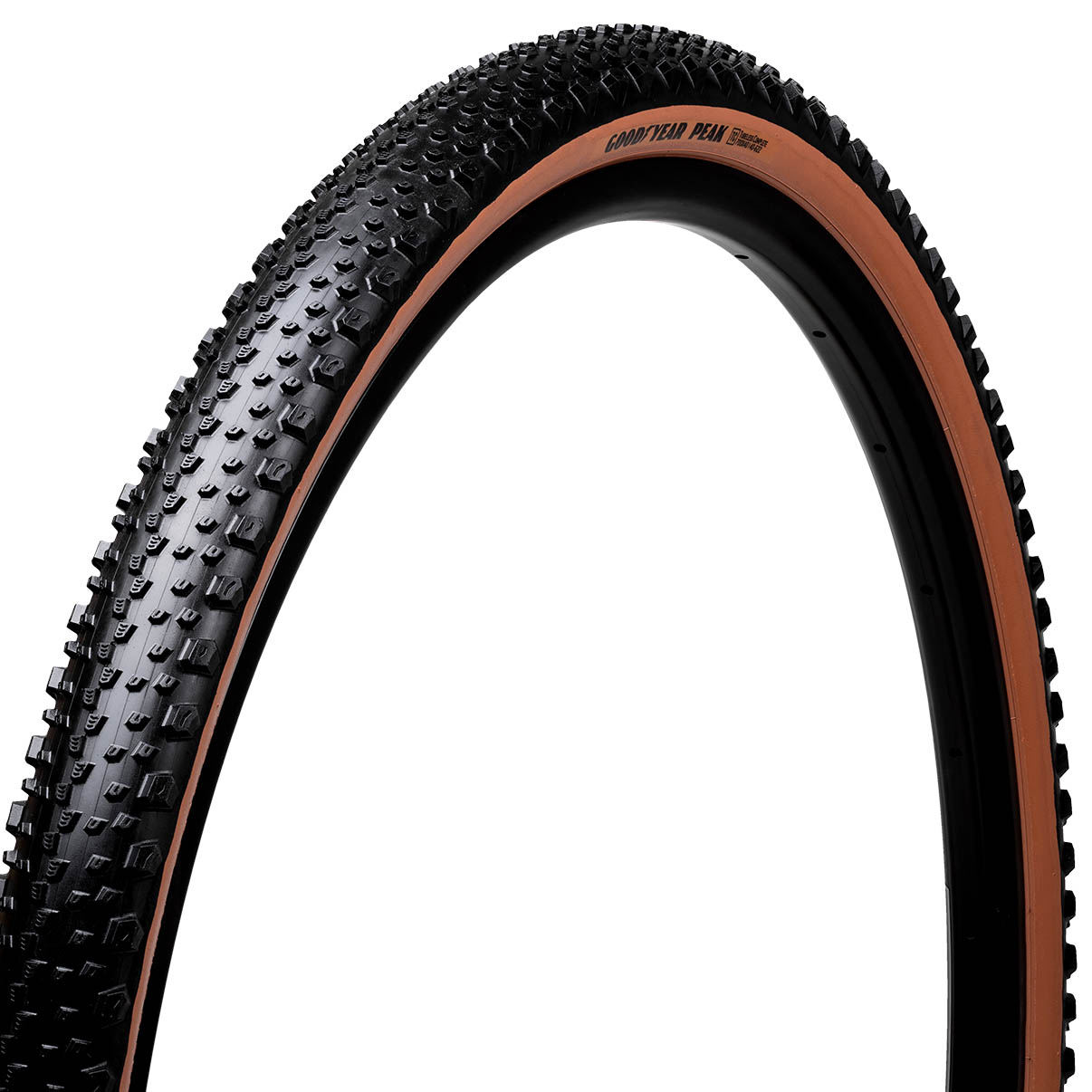
Where the Goodyear Peak excels is on those rides where the terrain is constantly changing, offering grip regardless of the surface, without compromising on rolling resistance of durability.
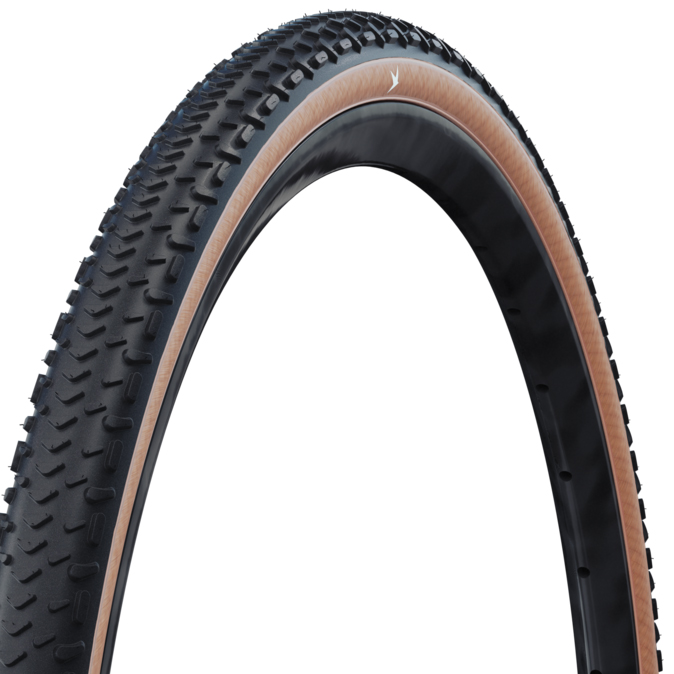
Providing the confidence I’m more accustomed to on a mountain bike, the Schwalbe G-One RX Pro has grip for days, to the point that you will struggle to get it to let go, even if you want it to.
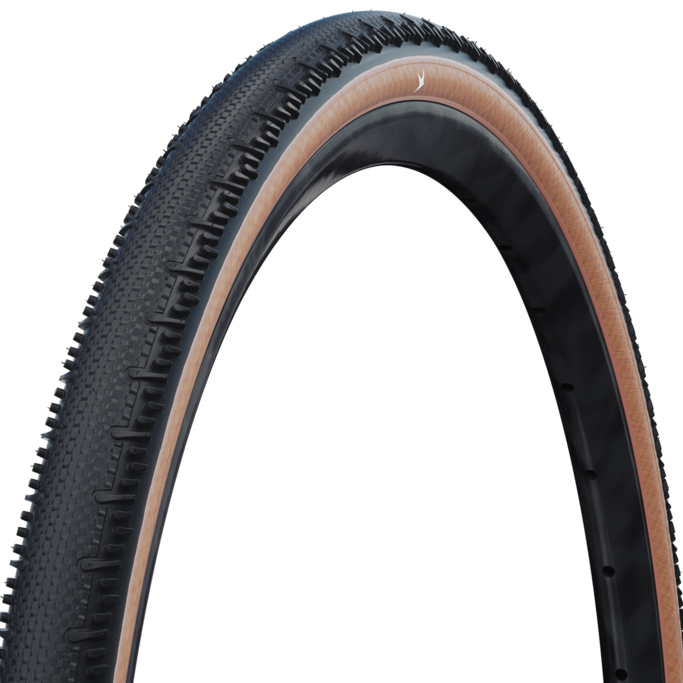
When conditions allow, the G-One RS is extremely rapid, light and very comfortable too. Furthermore, it's easy to mount and set up tubeless, but obviously, it doesn't offer much in the way of grip in loose or wet conditions.
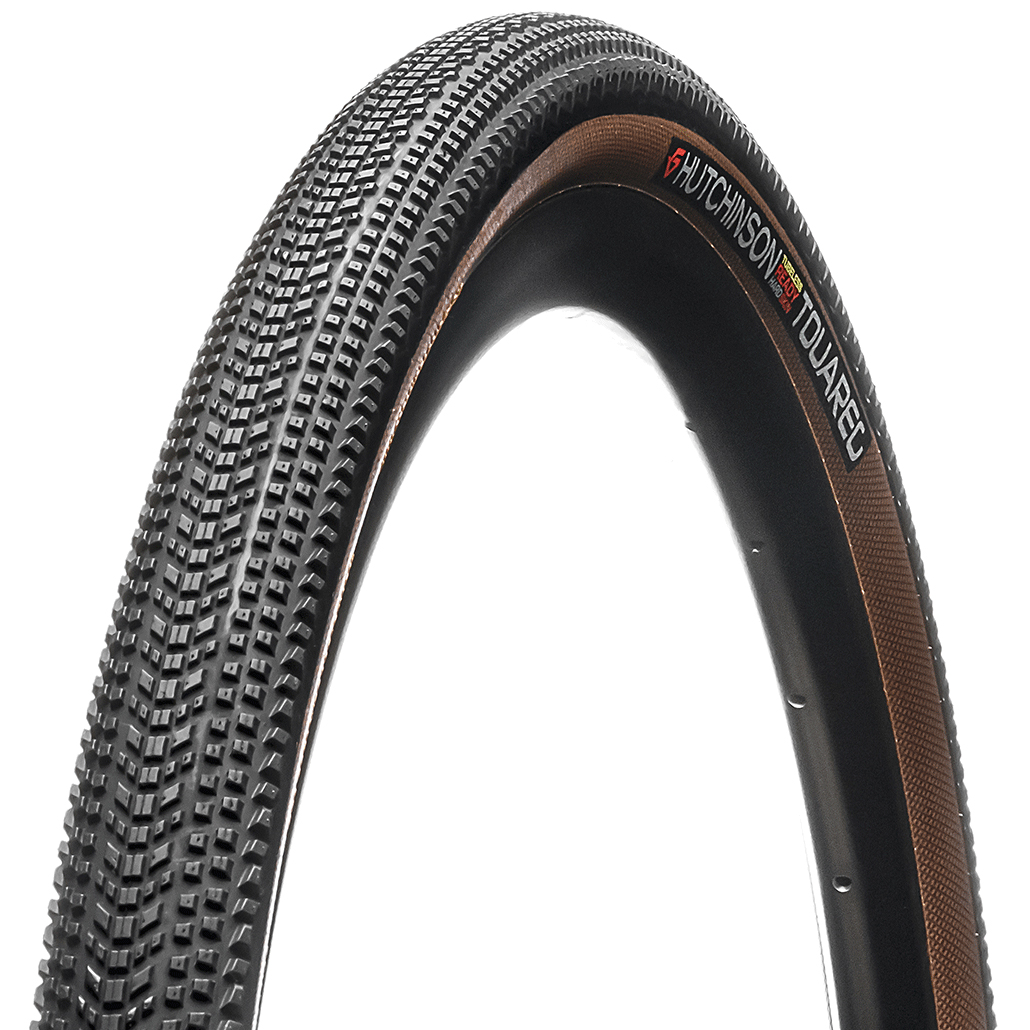
Grippy, quick and well-priced, the Touareg inspires confidence off-road in dry to medium conditions. The shallow centre tread rolls well, and the side lugs provide good traction when cornering, but the weight was rather more than claimed by Hutchinson.
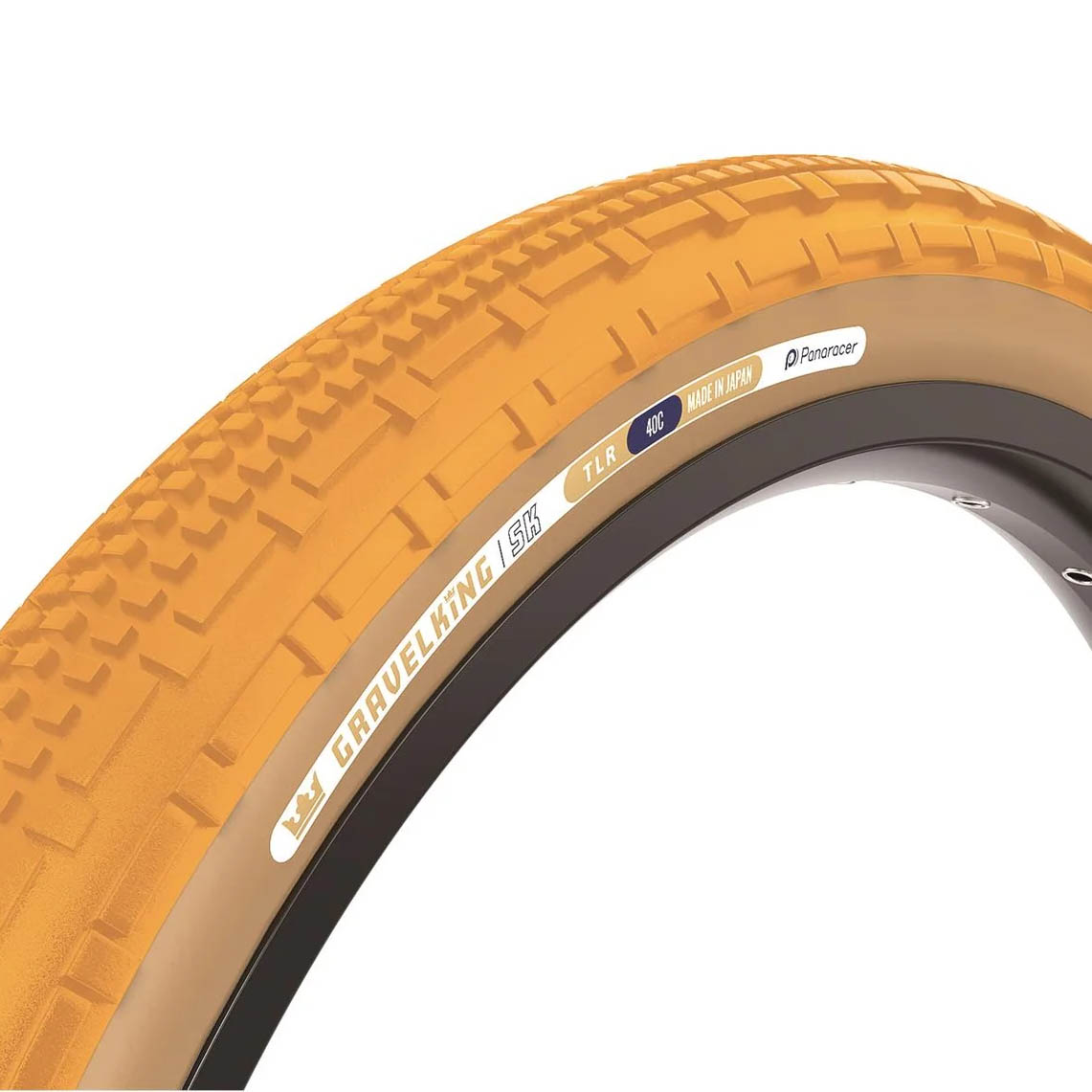
The Panaracer GravelKing SK has quickly become a benchmark tyre for gravel bikes. It offers decent rolling resistance while still providing good grip when the road turns to dirt. However, this is not a tyre for muddy conditions.
Load the next 3 models

With spaced, square knobs, the Resolute TCS SG2 works in softer conditions than many gravel tyres, so if mud or loam is a regular feature of your rides then these are worth considering. There is decent puncture protection too, thanks to a nylon insert in the casing.
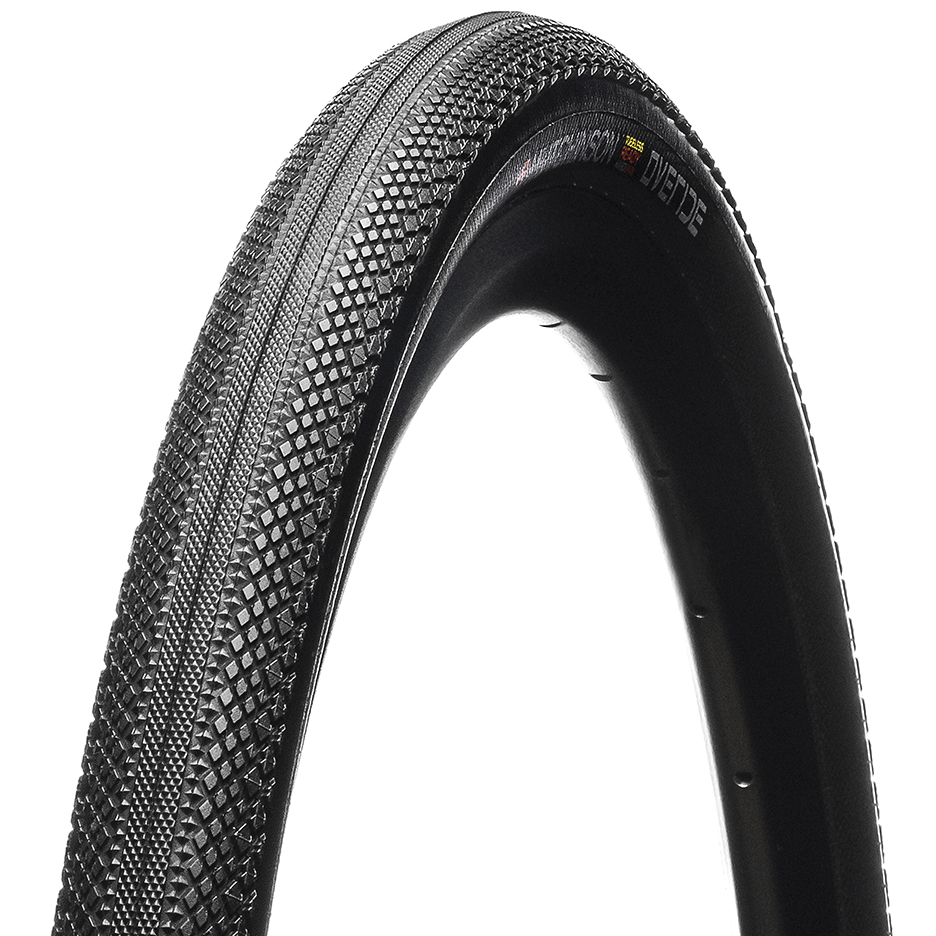
A file tread centre and densely-packed side knobs mean very low rolling resistance on hard surfaces whilst the tyre's volume gives extra comfort. Size and puncture protection push up the weight, though.
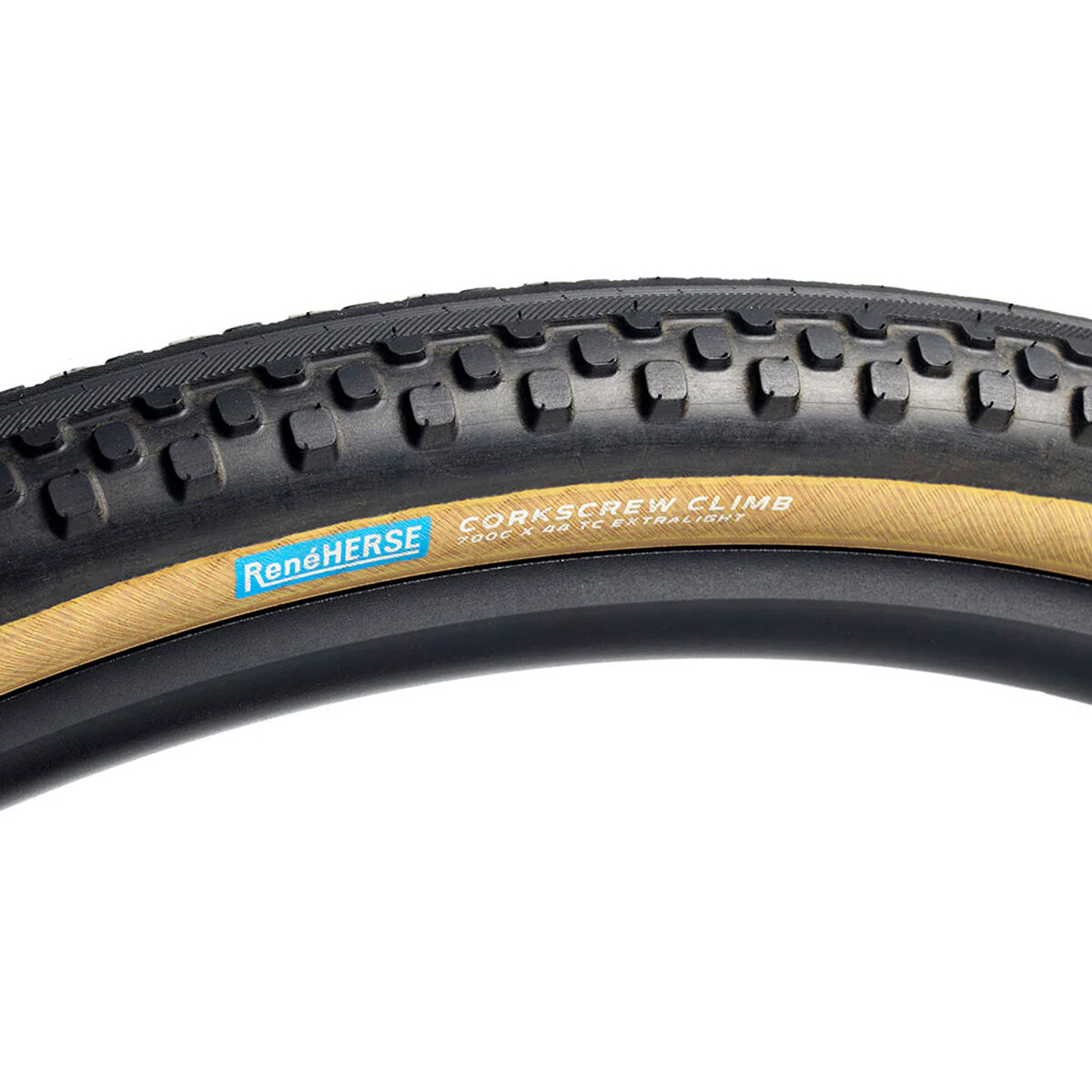
The Corkscrew Climb blends speed, grip and versatility, with more wet-weather confidence than other semi-slick gravel tyres. What gets me every time with René Herse, though, is their incredible ride feel.
Best gravel bike tyres: our top-rated from testing
Best all-round gravel tyre
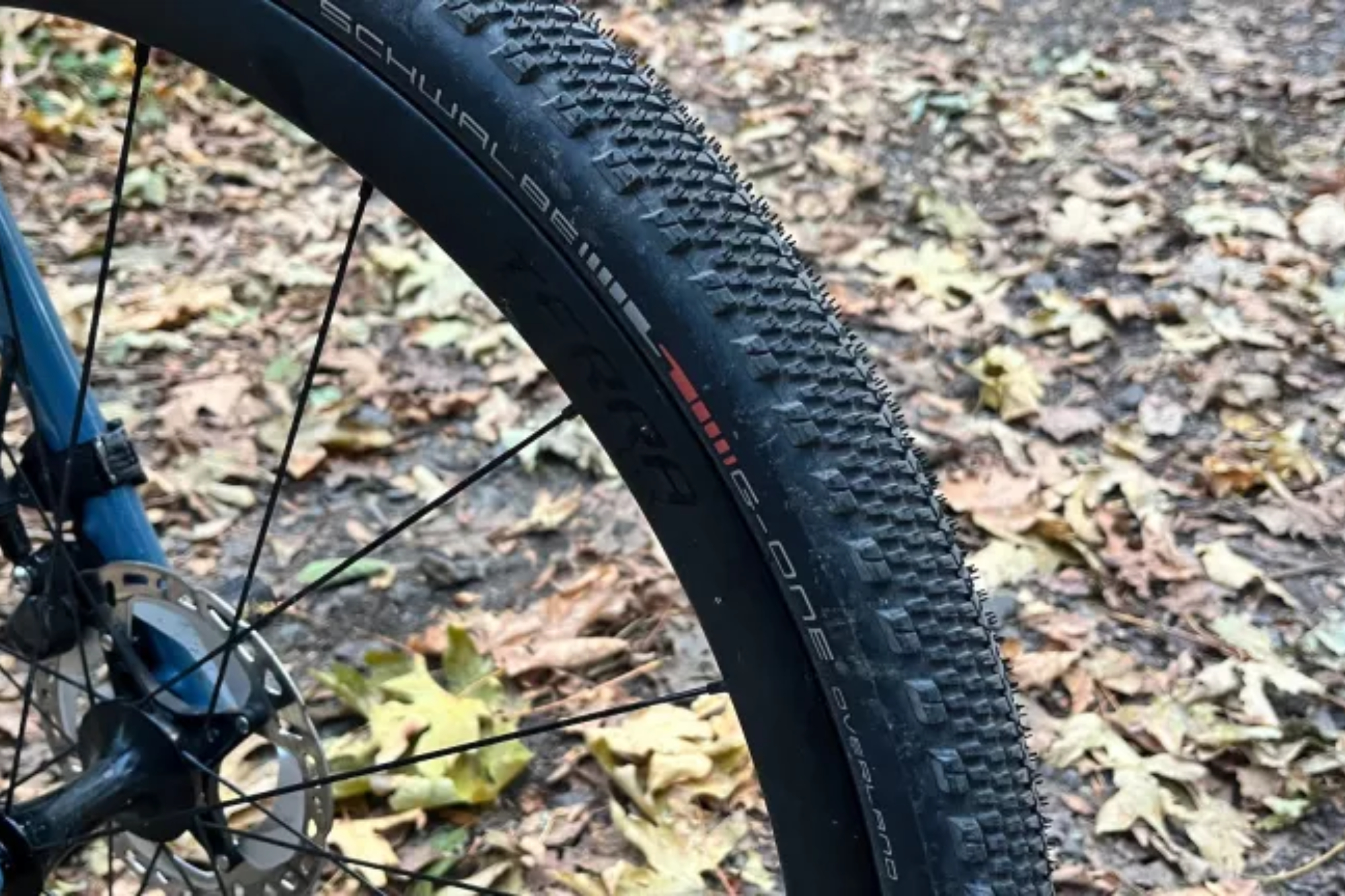
Schwalbe G-One Overland gravel tyre
Specifications
Reasons to buy
Reasons to avoid
Schwalbe’s G-One Overland is designed for gravel riders, commuters and e-bikers alike - especially for those riders who combine asphalt, gravel and a bit of dirt all in one ride, as the Overland strikes an excellent balance between off-road grip, on-road speed and all-around robustness.
The Overland has a fairly aggressive tread for an all-rounder, with quite high profile, elongated lugs on the outside for cornering grip and a tighter, horizontal centre tread with a little bit of bite, but also some swiftness. We found these tyres to be pleasantly quick for knobby tyres, whilst also impressing with their uphill bite and cornering grip on both gravel and dirt.
Underneath, Schwalbe’s Super Ground carcass, taken from the Racing Ralph mountain bike tyre, is there to deliver three-layer puncture protection - we didn’t experience any air leaks, punctures or even any visible scrapes or cuts during the testing period, and so in our experience, the tyres stand up well to off-road use.
Read our full Schwalbe G-One Overland tyre review
Best for mixed terrain
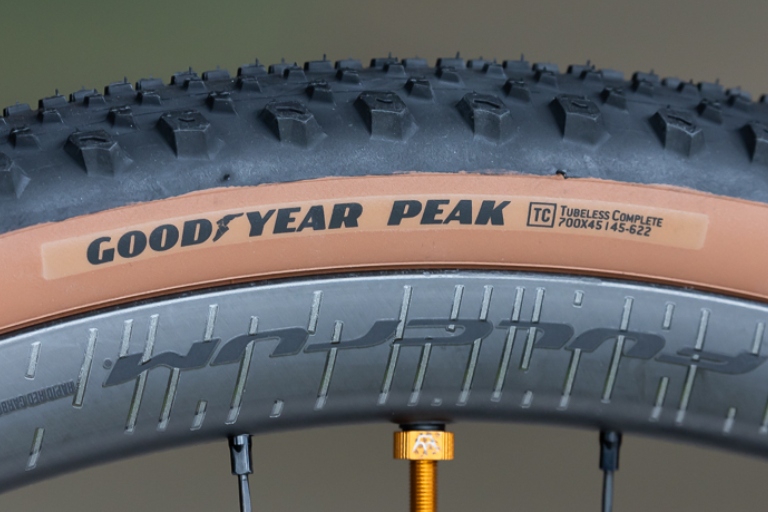
Goodyear Peak Tubeless Complete Gravel Tire
2. Goodyear Peak Tubeless Complete
Our expert review:
Specifications
Reasons to buy
Reasons to avoid
Goodyear's Peak gravel tyre uses their tubeless complete technology to help with easy tubeless setup and excellent air retention, and in our review, they certainly lived up to expectations. They went on to the rims without tyre levers, yet inflated instantly and rarely needed topping up with air.
They worked very well in the relatively well-drained and grippy conditions of the Peak District, providing good traction and comfort (thanks in part to their 45mm width). Durability seemed reasonable too, despite the generally rocky terrain. On road they worked fine, albeit not as well as a slicker tyre, of course, and light mud was also dealt with well. Wetter conditions and slippy roots or rocks might not suit the durable rubber and small knobs quite as well, but that is a trade-off we'd be happy to make in most circumstances.
Read our full Goodyear Peak Tubeless Complete Gravel tyre review
Best for loose surfaces
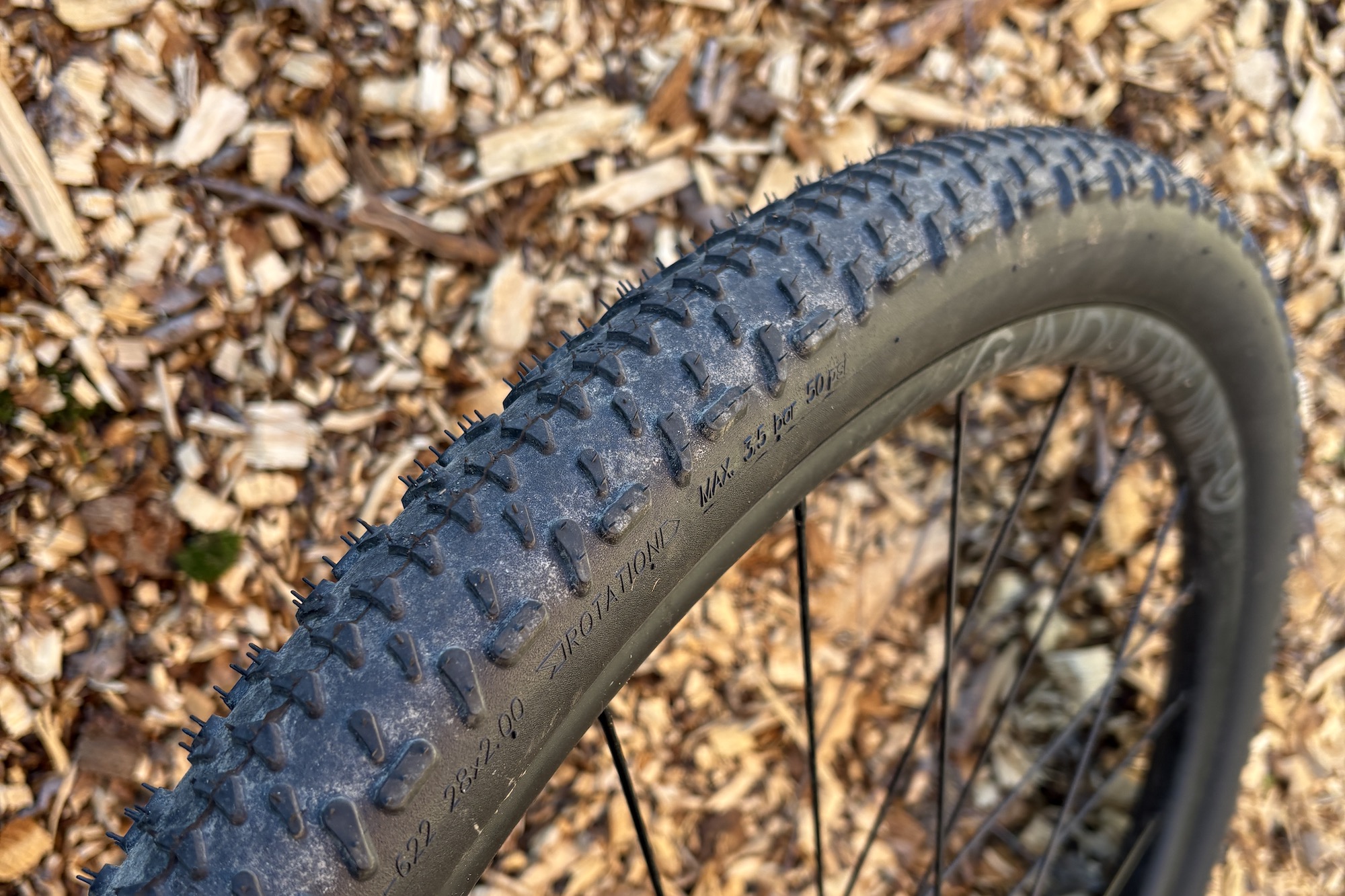
Specifications
Reasons to buy
Reasons to avoid
Maybe it's the size of the G-One RX Pro (50mm), or maybe Schwalbe has done something truly special with this tyre, but it just floats across any surface you put in front of it. Its low weight (615g/1.35lbs, which is pretty light for a 50mm tyre) and casing certainly contribute to making this tyre feel incredibly fast, nimble, and supple for its size.
Tested in the quieter neighbourhoods and parks around Seattle, I found it hard to find a surface on which the RX Pro would break free. It builds confidence that would normally be reserved for tyres in mountain bike sizes and thread patterns. Even on paved or hard-packed surfaces, you can really lean the tyre with very little squirm or fear.
Not everyone needs or wants 50mm tyres, nor do many have the clearance for such a size. If you have a bike with sufficient clearance, I highly recommend trying the Schwalbe G-One RX Pro, It is an excellent example of how good gravel tyres can be.
Read our full Schwalbe G-One RX Pro gravel bike tyres review
Best fast gravel tyre
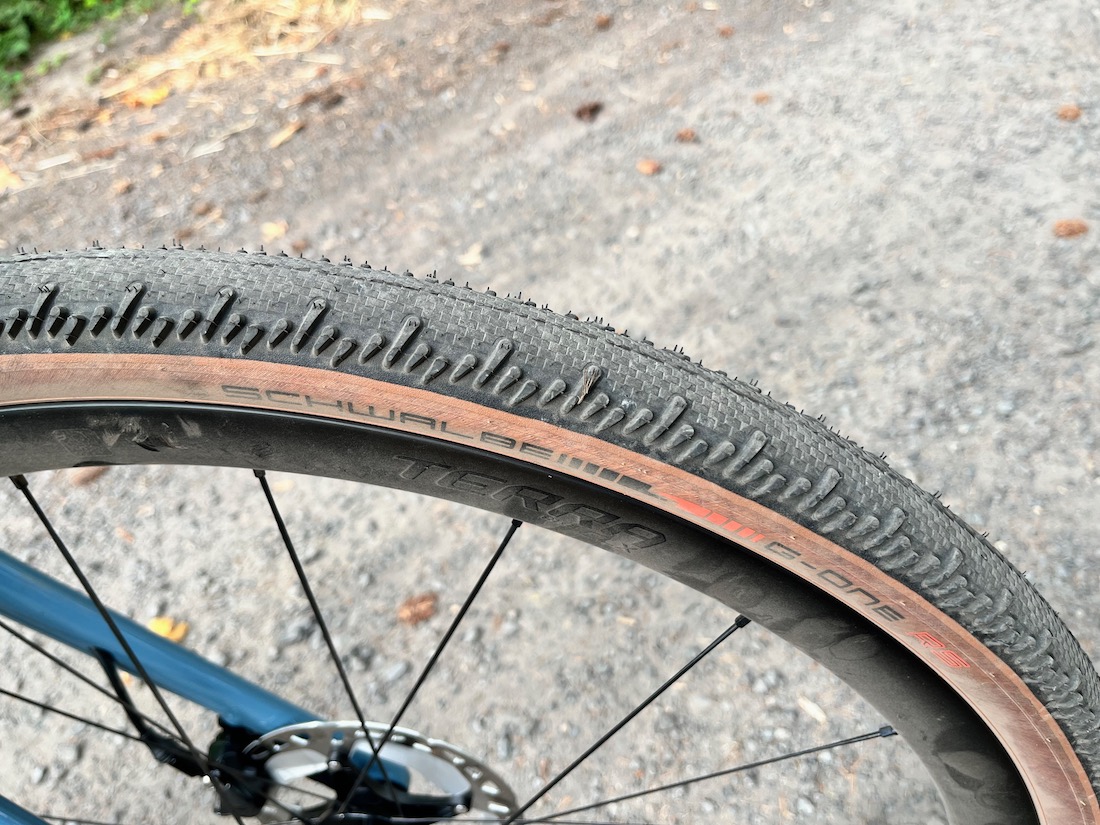
Schwalbe G-One RS gravel tyre
Specifications
Reasons to buy
Reasons to avoid
Billed as Schwalbe’s fastest gravel tyre yet, the G-One RS gravel tyre has 20% less rolling resistance than the already quick G-One R and 35g less weight as well.
A semi-slick tyre, the G-One RS is described as delivering "road speed with cyclocross grip", the tyre marries the semi-slick pattern of the Schwalbe X-One Speed cyclocross tyre with a more substantial outer knob design.
We praised the tyres for the 'easiest tubeless setup experience yet' and for sheer speed and durability despite the tyre's thin casing.
"In my time on the G-One RS tyre, I feel confident to name it among the best race-ready, speedy all-rounder gravel tyres on the market today" we said.
"Even if you’ll never line up to race it, you’ll enjoy the fast-rolling, supple quality paired with a reliable grip in most hard-packed or mixed-terrain conditions."
Read our full Schwalbe G-One RS gravel tyre review
Best budget gravel tyre
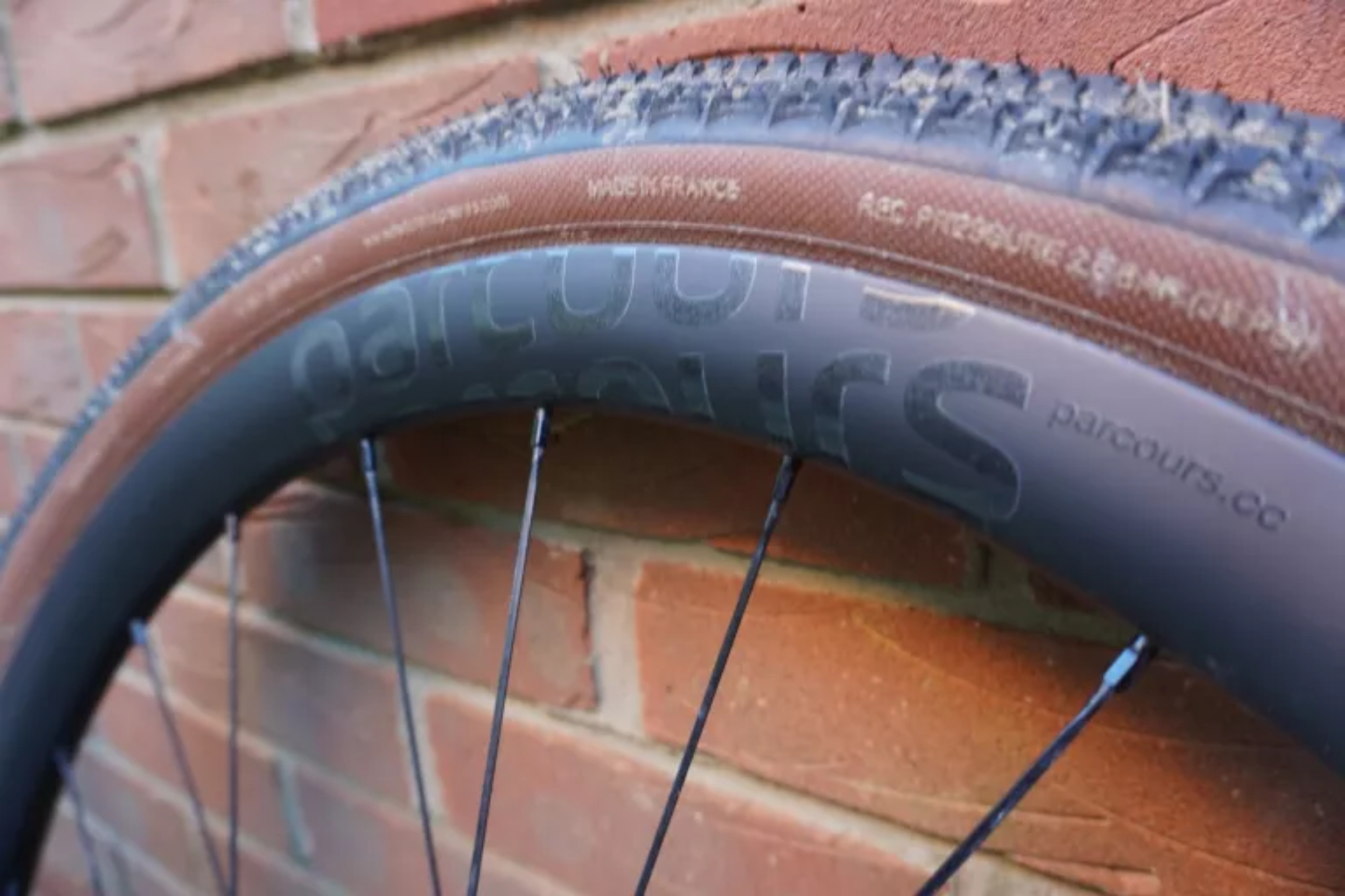
Hutchinson Touareg gravel bike tyre
Specifications
Reasons to buy
Reasons to avoid
Hutchinson's Touareg gravel bike tyres have a shallow chevron-style tread down the middle, with intermediate knobs on the shoulders. Larger still, there is a more widely spaced tread next to the sidewalls.
On review, when replacing a set of lightly treaded Schwalbe G-One tyres, we immediately felt more confident on more technical and steep terrain, and these tyres really excelled on dusty, dry and chalky surfaces. They're definitely more for off-road-oriented riders seeking to tip the road/off-road balance in favour of trails, but if you're riding in wet and muddy conditions, you might want something with more aggressive tread.
They retail at £33 / $64.99, although the claimed weight was some 80g heavier than we measured in our review.
Read our full Hutchinson Touareg gravel bike tyres review
Best for dry conditions

Specifications
Reasons to buy
Reasons to avoid
After being a little cautious with my tyre pressures, having not ridden on anything as knobbly as the GravelKing for a while and starting around 35 psi, I was surprised by just how fast the Panaracers were. This prompted me to lower them to 30 psi, which, although it felt no different in terms of rolling resistance, resulted in a considerably more comfortable ride and better grip.
There's a defined limit to the GravelKing's abilities, though, and that's once you hit any kind of mud. That lovely shape and tread that offer such good grip and low rolling resistance on harder surfaces fill up quickly and fail to shed very fast. This means you often find yourself riding a tyre with zero tread and squirming around in the hope of making it to hard ground as soon as possible.
That shouldn't detract from how good this tyre can be, mainly when used in the right conditions. That certainly is the Surrey Hills. If I were heading to Unbound or a similar event, I would certainly consider fitting the Panaracers. This performance comes at quite a keen price, which is always welcome.
Read our full Panaracer GravelKing SK gravel bike tyres review
Best for mud
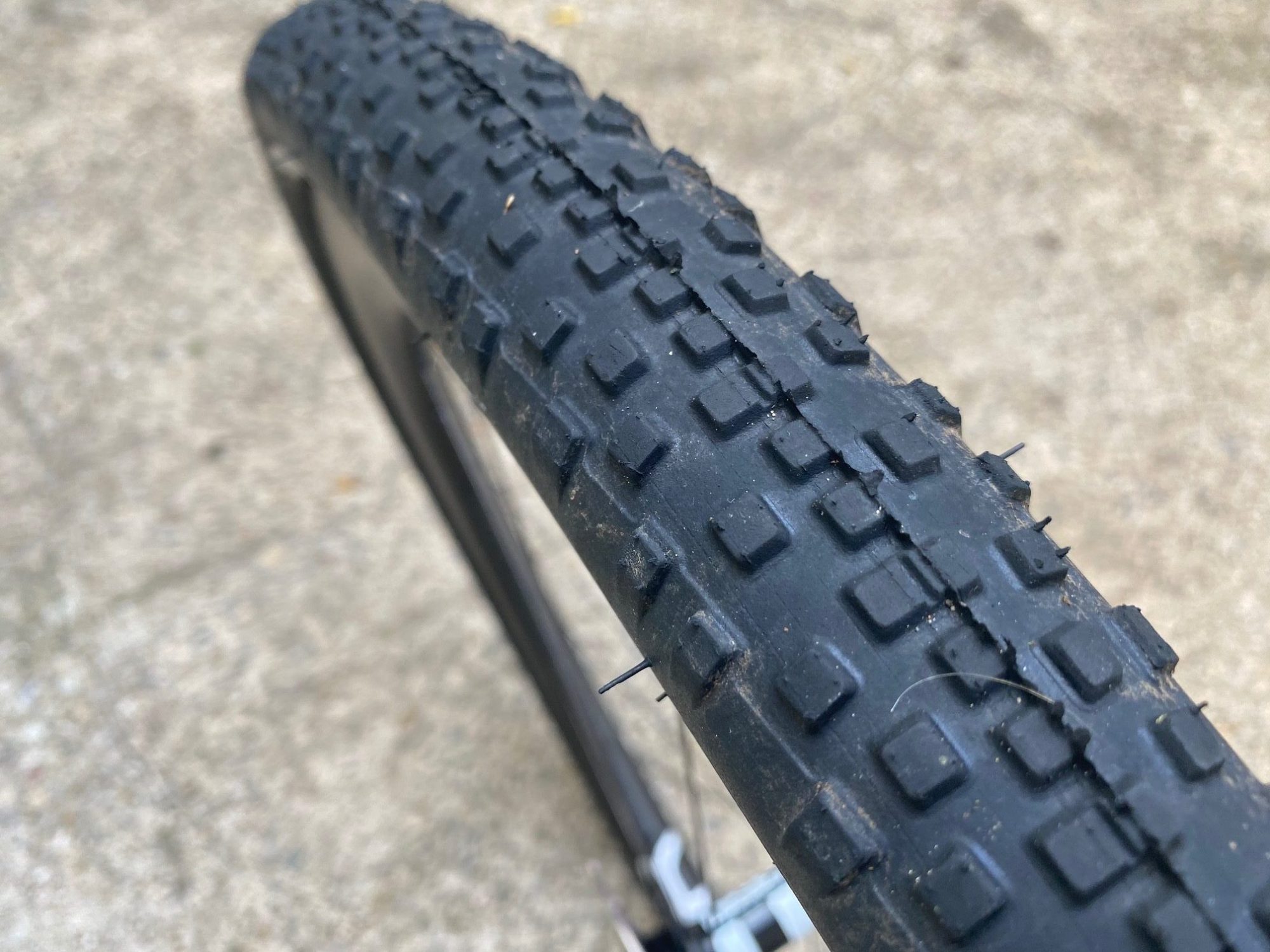
WTB Resolute TCS SG2 gravel bike tyre
Specifications
Reasons to buy
Reasons to avoid
The issues of puncture protection and weeping sidewalls have been roundly addressed in this new casing for WTB’s Resolute platform. The two-pronged attack saw the thread count increase from 60 TPI (Threads Per Inch) to 120 TPI, improving the suppleness of the carcasses and the way they deform around bumps. A nylon insert with flattened fibres protects while also keeping the weight down - only 20 grams are added over the standard version.
We liked that the tall knobs provided ample grip on loose terrain, such as loamy pine forests or sloppy singletrack, but it still rolled impressively well. The only downside of these tyres is that they're missing those trendy tan sidewalls.
Read our full WTB Resolute TCS SG2 gravel bike tyres review
Best for puncture resistance

Hutchinson Overide 50mm gravel tyre
Specifications
Reasons to buy
Reasons to avoid
We tested Hutchinson's latest 700 x 50mm width for its Overide tyres, which also come in narrower options down to 35mm and as a 650b x 47mm. The 50mm width weighs 610g, thanks to its reinforced design, which helps to ward off punctures.
Pay attention to frame clearance - we measured the tyres at 49mm, which may be too broad for some gravel bikes. This does mean that they can be run at pressures as low as 25psi, though, which provides plenty of ride comfort.
The central tread is smooth, which leads to low rolling resistance on hard-packed gravel and tarmac, while raised side knobs add grip through corners. The tyres don't fare too well in slippery conditions, though.
Read our full Hutchinson Overide 50mm gravel bike tyre review
Best semi-slick gravel bike tyres

Specifications
Reasons to buy
Reasons to avoid
If you know anything about René Herse tyres, owner Jan Heine doesn't do anything by halves or without good reason, which is why a semi-slick has been absent from the René Herse range. Heine stated that "the established way to make semi-slicks resulted in tyres that were neither particularly fast, nor did they grip particularly well.”
So, after three years of development with influence from big names within gravel racing, such as Ted King and Brennan Wertz, what has René Herse brought to the table that others haven't managed?
Immediately, you know the Corkscrew Climb is a bit different. It looks rugged and despite its slick centre, it has considerably knobbier edge profiles than anything else on the market. This results in a tyre that weighs in at 552g/1.21lbs in the Endurance casing.
While the Corkscrew felt fast, according to bicyclerollingresistance.com, oddly, its knobbly sibling, the Hurricane Ridge, has the edge. What mattered to me was a noticeable improvement in performance out on the road. The slick centre provided a much broader contact patch over the Hurricane on the road, meaning I could push harder and overall made me faster, whilst knowing I'd still have decent grip when the corners got loose.
The Corkscrew Climb did leave me with a question, though: Does this semi-slick design offer anything over the brand’s already extensive range? It has the brand's signature supple ride feel, and it certainly strikes a better balance of speed, grip and versatility. However, given the performance of the brands' other tyres and options like the less-knobby tyre Schwalbe G-One RS, I still find it hard to see a scenario where I would choose it over others.
Read our full René Herse Corkscrew Climb tyre review
How we test
Testing tyres always involves a certain degree of nuance, especially gravel tyres, as the surfaces and conditions we ride in are slightly different depending on the location. That said, here at Cycling Weekly, our experienced testers always try to provide a comprehensive review.
One thing all our testers will do during a gravel tyre test is set a mixed terrain route that is regularly repeatable and can be ridden year-round. This helps to give good comparisons, not just between tyres, but also how a tyre performs in a given condition on the same surfaces.
A large part of any tyre test is, of course, the setup. We can't guarantee this is always done exactly the same way, and we certainly aren't always using the same sealants and pumps, etc. However, each reviewer should outline what they used during the review. Where possible, some will even fit the tyre several times to different internal rim widths using various methods and sealants.
Finally, we are paying attention to the manufacturers' claims in the real world, especially regarding tyre width and weight, as these can show significant variations. Our reviews should always state the internal rim width that the tyre is fitted to and what the tyre measures as; this is called the effective size. We will also weigh the tyres ourselves before fitting and use this process to raise any discrepancies.
How to choose the best gravel tyres
Just like Keith Bontrager's famous quip of "strong, light, cheap - pick any two," there's always an element of compromise when it comes to selecting the best gravel bike tyres for your bike.
You'll need to consider the terrain you'd like to tackle, what the conditions are like when you ride, and your riding style when it comes to weighing up the options.
That means you'll have to assess tread pattern, size, volume, durability, tubeless compatibility and puncture protection, alongside price and aesthetics when it comes to scouring the growing gravel tyre market.
What's the best gravel tyre tread pattern?
Essentially, more tread equals more grip, although at the cost of rolling resistance. The best tread for you will largely depend on the terrain and conditions. If you spend most of your time on roads or light gravel, then a fat slick or file tread may be best, whereas if you mostly enjoy singletrack or fire road bashing that pushes the limits of a gravel bike, a knobbier tyre will help keep you upright.
In the wet, taller and wider spaced knobs on the tread will add grip and help the tyre clear mud, although this can make the bike feel a bit more sluggish on the roads. Therefore, many riders have a preference for different winter and summer tyres, depending on where you live.
As an aside, when riding in wetter and muddier conditions, don't underestimate the benefits a set of gravel bike mudguards can bring. These don't give quite the same protection as a traditional set of road mudguards – which can easily get clogged with actual mud and stray branches – but they do keep the worst of the silty water off you and your bike, making riding longer distances much more enjoyable.
What gravel tyre size and volume should I look for?
The size and volume of your tyres will be limited by the amount of clearance that you have, both in your fork and rear triangle. Opt for smaller 650b wheels (if your frame is compatible) to allow you to up the volume and width of your tyres. This greater volume allows for lower tyre pressures, which creates a more comfortable ride and also offers improved grip, thanks to a larger contact patch on the ground.
If you'd like to run traditional fenders in the wetter seasons, be mindful that you might need to size down your tyres to make room.
How long will the best gravel tyres last?
How long your tyres will last depends largely on the compound used for the tread and sidewalls, and also the level of puncture protection (more on this later).
The compound used will be matched to the type of riding that the tyre is intended for. Cyclocross tyres, for example, tend to be softer for use on grass and mud, while more road-focused tyres will be made from a harder-wearing compound to cope with the harsher surface of the asphalt.
Just like with the soles of MTB shoes, a softer rubber will offer more grip, but will also wear more quickly.
You should think about replacing your tyres when you have significant wear on the tread (although just like old-school cyclocross riders, this can make for a good summer tyre and save you some money), or if you see bubbles of tubeless sealant coming through the sidewalls. There's nothing stopping you from putting an inner tube in the tyres at this point and using them on a townie or commuter, as long as you replace them before they become dangerously worn.
Should I run tubeless?
Almost all gravel bike tyres on the market are now tubeless-ready, although it's definitely worth double-checking before you buy. When you pick up a set of tubeless tyres, make sure to chuck some tubeless sealant in your cart too. This liquid is poured directly into the tyre, or injected through the valve (with the valve core removed) and will plug holes from thorns, staples, and glass on its own, which in the best case scenario can mean that you can carry on without even knowing that you've punctured.
You may notice the loss of air pressure between the puncture and the sealant doing its job and you will need to top up on air. In some cases, you'll need to rotate the tyre to allow the sealant to flow to the affected area for a better chance of sealing. Sealant does have its limits though, and with more serious punctures and bigger holes, a tubeless repair plug may be required.
If your sidewall has been slashed by an offending rock, you'll need to boot it and pop in an inner tube to get you home before replacing your tyre. Even though tubeless tyres rarely puncture, you should still always carry an inner tube of the right wheel size, just in case.
A common misconception is that you can't get a pinch flat while running a tubeless set-up. If you are using tyre pressures that are really low, you run the risk of doing this not to your inner tube, but to the tyre itself, especially on rocky terrain. This 'snakebite' of the tyre is costly and best avoided. Although you can either plug or internally patch the two holes, it often weakens the tyre and can cause awkward punctures toward the bead of the tyre which are tricky to fix.
Will tan sidewalls make me faster?
Last but by no means least: the looks. Tan sidewalls are incredibly popular when it comes to gravel bike tyres, although they won't be everyone's cup of tea. Many of these tyres will be available in black too, or some even with coloured treads or sidewalls.
Make sure you wash your bike regularly — probably every ride in the winter at least — to keep your components happy and your tan sidewalls looking fresh.
Keeping your bike clean also gives you the opportunity to carefully inspect your bike up close, which can help you identify any potential issues with your tyres or let you know when they need replacing. And keeping your bike cleaner will help it work better so, yes, tan sidewalls will really help you to ride faster.
The latest race content, interviews, features, reviews and expert buying guides, direct to your inbox!
- Matt Ischt-BarnardEcomm and Tech Writer
- Anne-Marije RookNorth American Editor